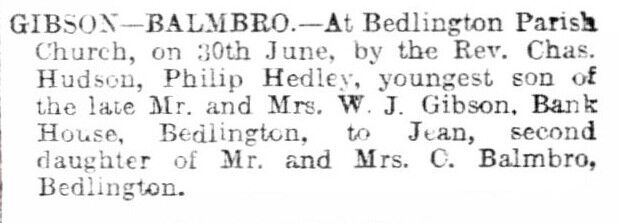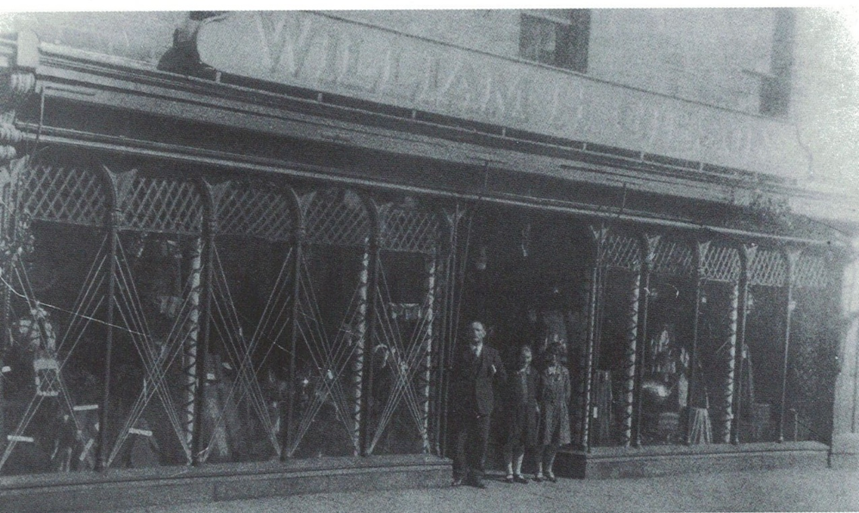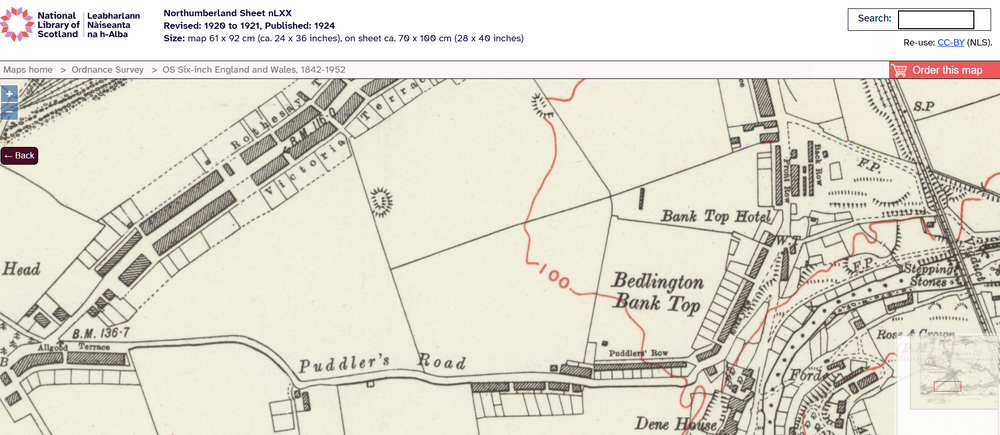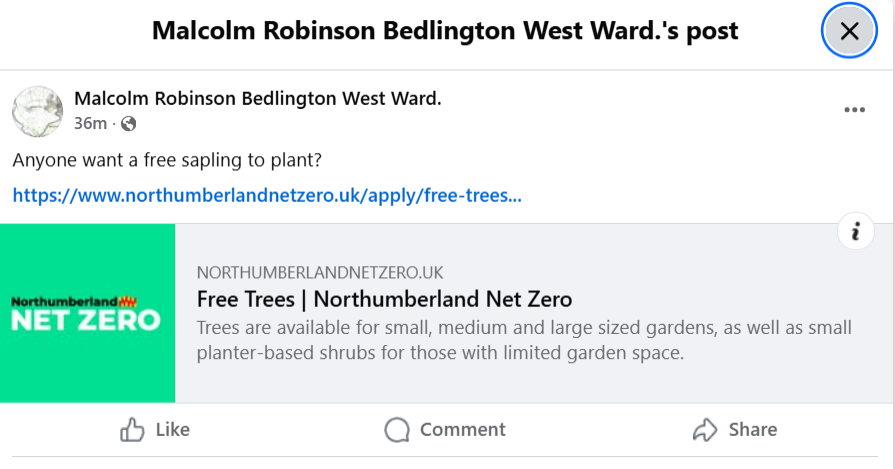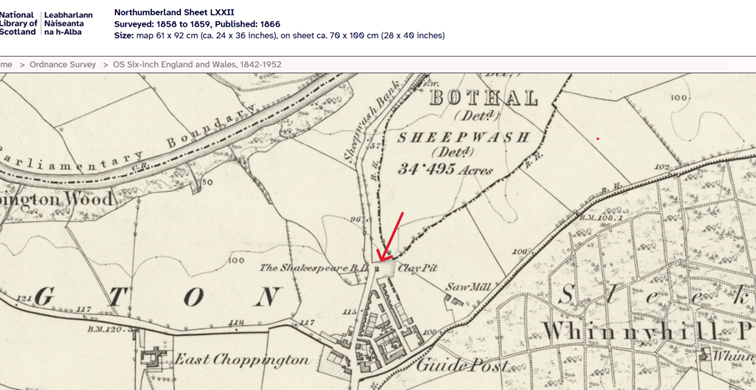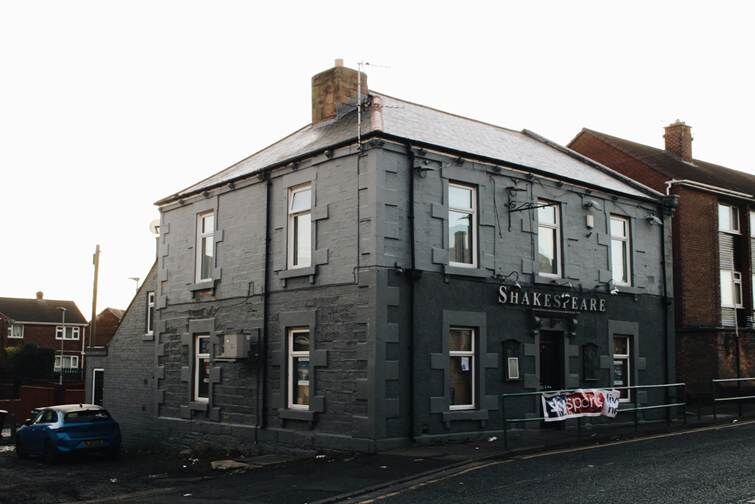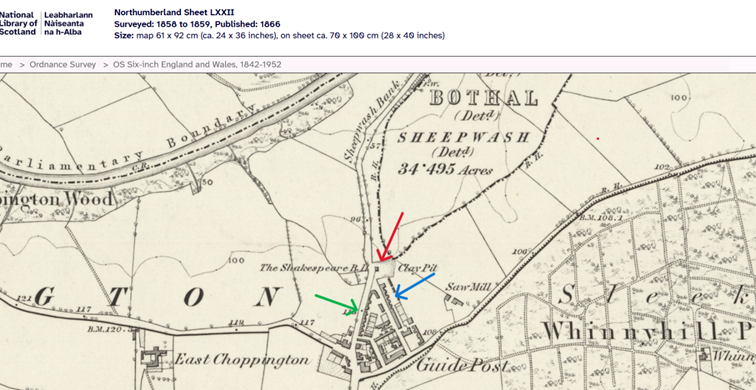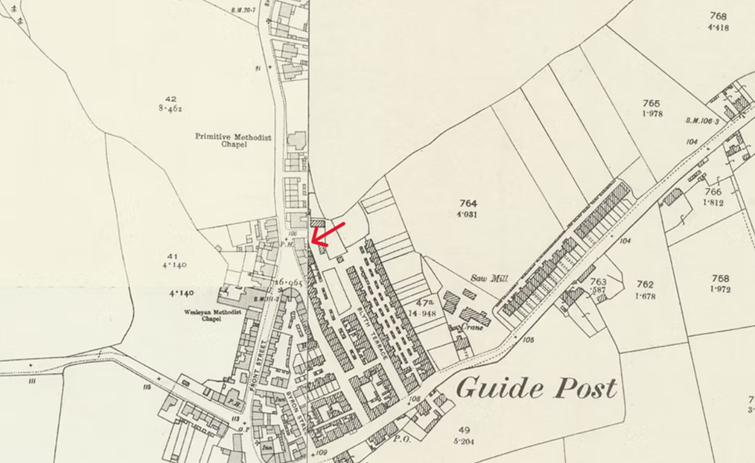On Bedlington.uk Now...
- Past hour
-
And finally, there was bank manager Edward Mostyn Gibson. What happened to him? He has been extremely difficult to find and here’s the reason why. In September 1936 Edward Mostyn’s wife, Mabel, dies at the age of 51 years. Her address is then given as Middleton Street, Blyth. One can only wonder why. After a great deal of searching I eventually found the first trace of Edward Mostyn’s whereabouts in 1939 – and possibly a reason for his wife being in Blyth. He was at that time a patient in St Georges Hospital, Morpeth. How long he had been there is impossible to say. Mental Health Care wasn’t exactly at it’s best in 1939 and admissions were more frequent than discharges. What I can say with certainty is that Edward Mostyn died in St George’s Hospital though, again, it’s impossible to say how long he had been there. At the time of his death, he did however own a home in Bedlington – 106 Rothesay Terrace – next door to his brother at 105 (106 was vacant in the 1939 register when Edward M was in hospital). Those effects are worth only £14,745 today. A sad end to an enterprising family and a big piece of Bedlington’s history. Hope you’ve enjoyed reading this as much as I’ve enjoyed researching it.
- 18 replies
-
- furnace
- vulcan place
-
(and 2 more)
Tagged with:
-
First and foremost, we can see that in 1939 Bank House was no longer in the possession of the Gibson family. It was now occupied by a mining family and, it seems to me, that the following family (at nr. 38) is living in the same building so possibly converted into flats. To come back to the youngest of the brothers, Philip Hedley Gibson, he seems to have continued in the field of selling. No doubt fuelled by his experience in the shop at Bank House, he has moved his family to the bright lights of Wandsworth, London where he is employed, not in any managerial position but as a salesman in a hardware department of a, presumably, larger, London store. Could one of his older brothers have taken on the ironmongers business in Bedlington? Unfortunately not. Brother William Henry Gibson continued to live on Rothesay Terrace but now at number 105. His occupation is then given as “Air Raid Precaution Clerk” with “Bedlington U, D, Council” so he has, presumably left the drapery business. Note that nr. 106 is vacant (V in margin). The place is not unoccupied but the resident is not available.
- 18 replies
-
- furnace
- vulcan place
-
(and 2 more)
Tagged with:
-
There has been very little information available after the 1911 census for the Gibson family but thanks to the release of the 1921 census research has now been made a little easier. In 1911 both Philip Hedley Gibson and his brother, Edward Mostyn Gibson were involved, albeit on different levels, with ironmongery. Edward M was, together with his father, joint manager in the ironmongery business. Philip H was working for them as an apprentice shopkeeper in the family shop at Bank House. After the death of their father, Edwin Mostyn takes over the management of the ironmongery business while continuing with his banking interests. Both Edwin and Philip are single and living at Bank House. In 1917 Edwin Mostyn marries. His bride is Mabel Robinson Turner of Blyth and she moves to her husband’s home. Three years later, in June 1920, Philip Hedley also marries and also brings his wife, Jean Balmbro, to Bank House. Jean appears to be the sister of his brother William Henry’s wife. Note: The name “Jean” would appear to be a misprint as her name is given as “Jane A” in the marriage index and as “Jane Ann” in the 1921 census. One year later, in 1921 the two sons and their wives are sharing the 10 rooms of Bank House. Philip H has completed his apprenticeship and is now entitled to call himself an ‘ironmonger’. He is stated to be an “employer” (rather than a worker, as previously) so seems to be in a managerial position in the business – if not the sole owner. I say the latter because his brother, Edward Mostyn, gives his occupation only as “Bank Manager” and his “employer” as “Bank of Liverpool and Martins Ltd.” but I can see from Kelly’s Directory that he is also engaged as “treasurer of the Urban District Council” of Bedlington. Both men give their place of work as “Front Street, Bedlington” so are presumably working from Bank House. By 1921 brother William Henry has left Bank House and has purchased a property at 89 Rothesay Terrace where he now lives. He is, however, still working at Hedley Young & Co. Ltd., drapers, on the south side of Front Street East, almost opposite Bank House. William Henry went on to become successful in his own drapery business and I’m sure you’ll recognise the premises, with its very distinctive arched windows, on Front Street East – the former ‘Dunns the Drapers’ which I’ve mentioned earlier in connection with the Gibson family. That’s William Henry in the shop doorway but I haven’t been able to identify the two girls. What happened to the three brothers and the family Ironmongers business after 1921? Fortunately, in September 1939, prior to the second world war which was looming on the horizon, the British Government decided to make an inventory of what human resources were available should they be needed. The gap is large between the census of 1921 and the ‘1939 register’, as it came to be known, and there is very little means of finding out which paths the brothers, William Henry, Philip Hedley and Edward Mostyn trod during those intervening years but we can get a glimpse of how it all turned out.
- 18 replies
-
- furnace
- vulcan place
-
(and 2 more)
Tagged with:
- Today
-
It's been a while but I have managed to do a fair bit of research between dahlias and geraniums. I'd like to get this finished before I fly off to the sun and return to piles of autumn leaves and snow. I've managed to get all my notes written up this week so here's the result. It'll probably need a few posts. Now, where did I leave off? Henry Gibson, head of the family, had died in 1902 at an age of 80 years. His son, Phillip Hedley Gibson – widowed and with no heirs – had followed him to the grave in 1906 leaving his brother, William James, to shoulder the responsibility of running the business. William James was then living in Vulcan Place with his wife Sarah (nee Mostyn) and their children: Mary, Edward Mostyn, William Henry, Lilian, James and Philip Hedley. However, by 1911 he and his family have moved back to Bank House on Front Street East. It has presumably been inherited after Philip’s death in 1906. There are, however, some notable changes in the family in 1911. William James Gibson is still in business as an “Ironmonger & Bank manager” and the property on front street is now described by the enumerator as being a “house and shop”. William James is also widowed but I haven’t been able to ascertain exactly where or when Sarah died. There is a death for a Sarah Gibson, 57 years old, registered in the first quarter of 1911 at Morpeth registry office – just prior to the census being done on April 2nd 1911. On that date three nieces of Sarah (daughters of Sarah’s two sisters), are shown on the census form as being at Bank House. Could they have been there because of Sarah’s death? Unfortunately, Sarah’s death has not been the only grief suffered by the family. In 1908 daughter Lilian had died aged 21 years, at which point, according to the newspaper obituary, her mother Sarah still lived and the family address is given as “North Eastern Bank” ie. Bank House. The only remaining daughter in 1911, Mary 28 years old, is still single and living at home, most likely taking care of the household now that her mother is gone. Also at home at Bank House are sons Edward Mostyn Gibson 27, William Henry Gibson 25, James Gibson 20 and Philip Hedley Gibson 19. The four sons were soon to be left fatherless, however, when William James Gibson dies November 3rd 1912 aged 57 years. He is sadly followed by son James, then 26 years old, in 1917. Those effects are worth approx. £275,450 today, so he didn’t do too badly either. Of the remaining three sons, only Edward Mostyn- and Philip Hedley Gibson have followed their father into the ironmongery business. The eldest, Edward Mostyn, is an ironmonger and also a bank clerk, while brother Philip Hedley concentrates solely on a career in ironmongering. At the age of 19 he is still learning the ropes as an apprentice shop-keeper, presumably in the family shop at Bank House but more about them later. Brother, William Henry, doesn’t appear to follow in the family trade choosing instead to follow his career in the drapery business. In 1911, now aged 25, he has completed his apprenticeship and is working as a draper’s shop assistant. The girl he will marry two years later in 1913, 23-year-old drapery colleague Alice Harbottle Balmbro, is also recorded as a visitor to Bank House in 1911. So, is this the end of an era for the Gibson Brothers Ironmongery business? Now, with their father dead and William H engaged in the drapery trade, only Edward Mostyn and Phillip Hedley remain to carry on the work started 88 years earlier by Phillip Gibson in 1814 – but will they do so?
- 18 replies
-
- 1
-

-
- furnace
- vulcan place
-
(and 2 more)
Tagged with:
-
Isabel Easson is now part of a group called 'The Friends of Westlea Cemetery'View the full article
-
Maybe Bedlington history society and you could join forces. BEDLINGTON needs its own museum. Maybe John Hall originally from North seats ,but went to Bedlington grammar school would donate the opportunities are there. It needs a team of volunteers to organise it. I was at school with Claire Mitchell ner mam wasEllen Mitchell. I am sure that her family would be involved. There are just so many people who would support this. Also I have an extensive collection of disaster glasses some that are unknown linked with Bedlington and guidepost, Anyway it’s just a thought
-
Thanks. I suppose that the council knows who owns the land. I will ring them. If they do maybe they will donate it.
-
-
Thanks for the info about the land. It was an uncle of mine who kept everything and we had to have an extension built to house all his parents stuff. Friends and family who see it think it’s a time capsule. At the moment I am busy cataloging all documentation and correspondence. Wish Even Martin was still around.
-
So a mini Beamish for Bedlington. Sounds good @Pegwoman. Do you think there is a spare plot of land, with Carparking, in Bedlington? The grassed area at the top of the Elenbel & Tomlea Avenue where Puddlers Row used to be? Our home is like yours as my wife keeps everything, stashed away in cupboards, just incase we ever need it
-
I actually have loads of artifacts from 1906 to 1980. Furniture , clothes, China, gramophone records. Household insurance documents, curtains from Shiney Row. First and Second World War correspondence. As well as photos. Then I am sure others have artefacts from 1980 onwards. Anyway it was just a thought. I loved Woodhorn as it was. Thanks for your comment.
-
Unfortunately @Pegwoman I would thing any artefacts of Bedlington's history will surely be with existing collections outside of Bedlington. Probably all Bedlington has left are a few photos
- Yesterday
-
Can Bedlington have its own museum. . . .? Having been involved with Beamish in the 1960s and then Woodhorn museum later on and the Northumberland Fusiliers museum at Alnwick Castle I wonder why the hell Bedlington hasn’t got its own museum. Grants and donations can be obtained I would love to be involved in such a project. My contribution would be financial and advice. Come on we deserve a museum.
- Last week
-
joanna Richardson joined the community
-
Chloe Kairton, of Liddles Street, appeared at Newcastle Magistrates' Court and was finedView the full article
-
Lewis Scarth was first told his cancer was actually a slipped disc - and spent months going back to hospital before rare cancer was spotted.View the full article
-
What a great idea! Pity I don't live nearer.
-
https://www.northumberlandnetzero.uk/apply/free-trees?fbclid=IwY2xjawNjKoNleHRuA2FlbQIxMAABHj814jY3EBkXVoM2c5XDd4SrHhRdyQstEzAeWn0m7q4PkGw5mcgR034zoqIT_aem_H4mkvU-6_T04lv-44awVbQ
- 1 reply
-
- 2
-

-

-
Northumberland Park and Bedlington are expected to open early next yearView the full article
- Earlier
-
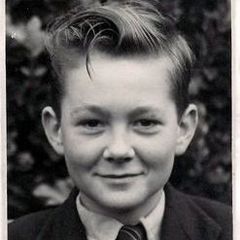
Northumberland Rail Line.
Alan Edgar (Eggy1948) replied to Malcolm Robinson's topic in Talk of the Town
https://www.northumberlandline.uk/post/bedlington-station-construction-drop-in-event-on-thursday-23rd-october-2025 Bedlington Station Construction - Drop In Event on Thursday 23rd October 2025 2 days ago The Northumberland Line team will be holding a public information drop-in session on Thursday 23 October 2025 from 6:00pm to 7:30pm at East Bedlington Community Centre, 16 Station Street, Bedlington, NE22 7JN. Members of the team delivering the project, including Northumberland County Council and stations contractor Morgan Sindall Infrastructure, will be available to speak to about the construction works. PLEASE NOTE THAT THIS IS A DROP IN EVENT AND NOT A PRESENTATION EVENT. Advanced notice of kerb replacement works and drainage testing works From Monday 27 October 2025 – Friday 7 November 2025 we will be replacing the kerbs on Station Road, Palace Road and Ravensworth Street between the hours of 11:00pm – 6:00am Monday – Friday (nights only). During this period works to test the drains ahead of the drainage installation will also be carried out in the carriageway on Station Road, Ravensworth Street and the junction of Station Road on the evening of Monday 27 October 2025- Tuesday 28 October 2025 between the hours of 11:00pm – 6:00am. In order to carry put these works safely, traffic management will be in place in the form of multi-phase lights throughout this period of works. The phased traffic management approach will mean only one lane will be closed at once so access will be maintained throughout the works. Please note that a pedestrian diversion will in place during this period which will be clearly signposted. What to expect during the works Throughout these works there is potential for noise and vibration, and delays to your journey. We will aim to keep disruption as minimal as practically possible and within the terms agreed with the local planning authority. -
Hi @loopylou Your turn to make a cuppa! Have you ever heard the saying ‘Cherchez l femme’ (literally, ‘look for the woman,) commonly used in detective fiction when solving mysteries? I have my own version ‘cherchez la pub’ (literally, ‘look for the public house’) which I use in detective reality to solve the mysteries of family-whereabouts. While streets and roads often change their names public houses very rarely do and when it does happen, it’s often to a spin-off from the old name. If your relative is John Storey (wife A, children: S A, E and J I) then it’s possible not only to find the street but possibly even the house. Just follow the enumerator on his route until you find both your relative and the nearest pub. Often the pub is still in existence today. Using my ‘cherchez la pub’ method, I followed the route of the enumerator, Mr George Thornton, in the 1871 census: Parliamentary Borough of Morpeth – Parish of Bedlington – Ecclesiastical district of Choppington, Enumeration district 10. George Thornton, describes his enumeration district as “Guide Post East, West, North & South. Choppington, Choppington New Colliery, Bothal Haugh, Sheepwash Bank, Sheepwash & Cleesewell Hill, Stakeford Gate & Cottage in the wood”. Following the census on the 3rd of April 1871 he starts his rounds at the Angler’s Arms (schedule nr 1) at the bottom of Sheepwash Bank and continues up the bank along what is today the A1068 to schedule numbers 2 – 5. These 4 dwellings, simply have the address “Sheepwash Bank” which is located in the “Hamlet of Sheepwash Bank”. From there he proceeds straight ahead to the “Village of Guide Post” where the 7 families resident at schedule numbers 6 - 12 simply have the address “Guide Post”. Still in the “Village of Guide Post” he continues along “Sheepwash West Street” and visits the 16 families living there (schedule nrs. 16 – 28). Moving on, he enters “Sheepwash - East Row” (schedule nrs. 29 – 57) and its 29 families. At schedule nr. 36 I find Thomas Marsden – hopefully the same person you mentioned in your previous post. At schedule nr 45 I find, what I believe to be your relatives, John Storey and family, and low and behold at schedule nr. 54 I find the first public house on George’s round. It’s called The Shakespeare– and here it is on a map from 1866! You’ll see that The Shakespeare is marked BH. This is because it was originally (1850s) a Beer House (marked BH on OS maps rather than PH, Public House). At that time, according to the North East Heritage Library, it was the most northern building in the Village of Guide Post. Being a beer house meant that it was only allowed to sell ale whereas a public house could sell anything. Because of this restriction it was much cheaper to obtain a licence for a beer house. Here is the ‘Shakespeare’ today. If you live in the area you’ll probably recognize it as being on Front Street in Guide Post though this is not the original building. So, where did John Storey live? Between John Storeys residence and The Shakespeare there were only 8 dwellings so my guess is that “Sheepwash West Street’ and “Sheepwash East Row,” both in the village of Guide Post” are the following - in which case John lived towards the northern end of “Sheepwash East Row” (possible West Street arrowed green, possible East Row arrowed blue) just a stone’s throw from the beer house. However, there is another option. East Row probably changed its name and if the above blue-arrowed row is East Row, then it was built out between 1866 and the 1890s filling the gap between the northern end of “Sheepwash East Row” and The Shakespeare. You can see this development in this compilation of 2 maps from the 1890s on the left and the 1920s on the right (The Shakespeare marked in red on the 1890s side and now a PH). If this development occurred between 1866 and 1871 when the census was completed, he would have lived in the new development. What about Thomas Marsden? A possible explanation for Guide Post vs. Scotland Gate may be a district boundary change. Just a thought! I hope this was of use to you and that you yourself might find a use for my ‘cherchez la pub’ method. If you want any of the documentation I've researched give me a shout.
-
A potential lead on from a newspaper article in 1874, I’m thinking maybe this East Row in 1871 was at Scotland Gate. Unless there were two, one there and one in Guide Post. 🤔 I’ve just checked and Thomas Marsden does appear in the 1871 census a few pages from my ancestors. So Scotland Gate, not Guide Post.
-
@DJA 24 Thank you for your reply. I’m already aware of the NLS maps (and what a brilliant resource they are!). I’ve looked at the Guide Post maps but unfortunately as you say, they don’t bring up much even when the layouts have been the same. Guide Post is quite a mystery… I searched up one of the named streets, Blyth Terrace, and even that has been enigmatic in results except a few newspaper articles.

.thumb.jpg.7493ddab4a696108cf2b849323d3c155.jpg)






